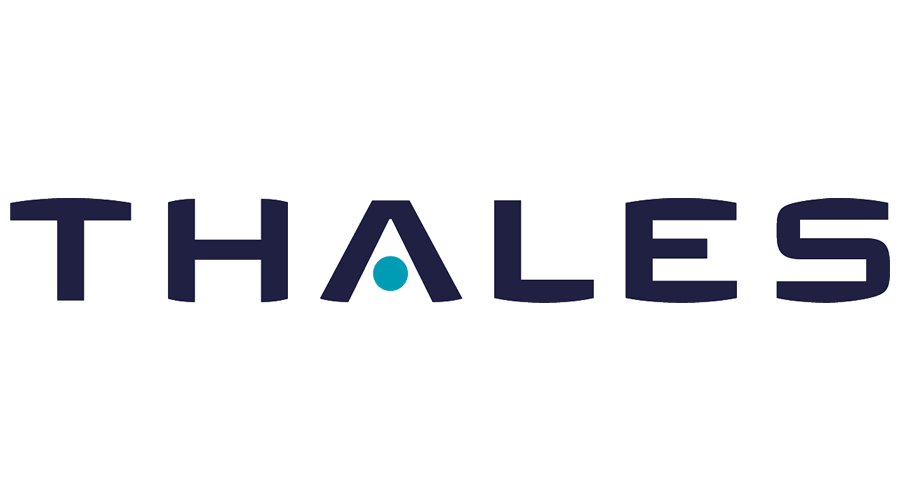| 1 |
Administration |
| 1.1. |
Why Persistent Platforms? |
| 1.2. |
The Market for Persistent Platforms |
| 1.3. |
Scope of this Report |
| 1.4. |
Basic Assumptions |
| 1.5. |
Methodology |
| 1.5.1. |
Research Team and Methods |
| 1.6. |
Who Is This Report For? |
| 1.6.1. |
Business and Civilian Government Leaders |
| 1.6.2. |
Military Leaders |
| 1.6.3. |
Persistent Aerial Platform Professionals |
| 1.6.4. |
Payload Professionals and Market Analysts |
| 1.7. |
About the Lead Analyst |
| 2 |
Executive Summary |
| 2.1. |
The Problem |
| 2.2. |
The Solution |
| 2.3. |
What is a Persistent Aerial Platform? |
| 2.3.1. |
Heavier vs. Lighter-than-Air in the Stratosphere |
| 2.4. |
Major Findings |
| 2.4.1. |
Summary |
| 2.4.2. |
Detailed Findings |
| 2.5. |
Major Conclusions |
| 2.5.1. |
Flight Vehicles |
| 2.5.2. |
Culture |
| 2.5.3. |
Commercial Issues |
| 2.5.4. |
X-Prize? |
| 3 |
Development Drivers |
| 3.1. |
Triple-Use Systems |
| 3.2. |
Unique Capability |
| 3.3. |
Effective at Reduced Cost |
| 3.4. |
Controllable, Dedicated, Specialized |
| 3.5. |
Cost Effectiveness |
| 3.6. |
Excellent Counter-Terror Tool |
| 3.7. |
Reduces Number of People at Risk |
| 3.8. |
Recognized Military Value |
| 3.9. |
Next Big Commercial Aviation Market |
| 4 |
Development Inhibitors |
| 4.1. |
Commercial Competition (Mostly from Space) |
| 4.2. |
Cultural Pushback |
| 4.3. |
Airspace Restrictions |
| 4.4. |
Radio Frequency Interference |
| 4.5. |
Technical Challenges |
| 4.6. |
US Government Budget Process |
| 5 |
Business Opportunities |
| 5.1. |
Early Adoption Profit Opportunities |
| 5.1.1. |
Permanent Communications Relay Services |
| 5.1.2. |
Direct Broadcast Entertainment (both Television and Radio) |
| 5.1.3. |
High-Speed Internet Connections |
| 5.1.4. |
Regional Earth Observation – Overhead Imagery |
| 5.1.5. |
Traffic Monitoring |
| 5.1.6. |
Gas-Oil Pipeline and Power Grid Control |
| 5.1.7. |
Contamination and Environmental Monitoring |
| 5.1.8. |
Natural Disaster Monitoring |
| 5.1.9. |
Agricultural Optimization |
| 5.1.10. |
Infrastructure Monitoring |
| 5.1.11. |
Border and Maritime Control |
| 5.2. |
Market Potential |
| 5.2.1. |
Space Capability Market Share |
| 5.3. |
National Security Market Opportunities |
| 5.3.1. |
Tactical Beyond Line of Sight Communication on the Move |
| 5.3.2. |
Wideband Reachback & Dedicated Strategic Communication |
| 5.3.3. |
Persistent ISR & Red Force Tracking |
| 5.3.4. |
Change Detection for Mines & IEDs |
| 5.3.5. |
Blue Force Tracking |
| 5.3.6. |
Battlespace Awareness |
| 5.3.7. |
Counter-Pirate & Maritime Patrol |
| 5.3.8. |
Foliage-Penetrating ISR |
| 5.3.9. |
Signals Detection & Characterization |
| 5.3.10. |
All Weather Imaging |
| 5.3.11. |
Detonation/IR Detection & Characterization |
| 5.3.12. |
Psychological Operations (PSYOPS) |
| 5.3.13. |
Fleeting Target Strike |
| 5.4. |
Aircraft and UAV Market Share Losses |
| 6 |
Vendor and User Attitudes |
| 6.1. |
Platform Vendor Attitudes |
| 6.2. |
Payload Vendor Attitudes |
| 6.3. |
User Attitudes |
| 6.3.1. |
Military/Government Customer Attitudes |
| 6.3.2. |
Commercial Customer Attitudes |
| 6.3.3. |
Build it and They Will Come |
| 7 |
Technical Potential |
| 7.1. |
Heavier-Than-Air: Technology Challenges |
| 7.2. |
Lighter-Than-Air – Technology Challenges |
| 7.3. |
Potential Field of Regard/View |
| 7.3.1. |
Sample United States Coverage from the Stratosphere |
| 7.4. |
Flight Vehicle Survivability |
| 7.4.1. |
Fixed Wing |
| 7.4.2. |
Lighter-Than-Air |
| 7.5. |
Payload Survivability |
| 8 |
Satellites vs. Persistent Platforms |
| 8.1. |
Similarities |
| 8.2. |
Differences |
| 8.3. |
Complementary Features |
| 8.4. |
Cost |
| 8.5. |
US Military |
| 8.5.1. |
Space Community Culture |
| 8.5.2. |
Culture Matters |
| 8.5.3. |
Culture-Driven Sales Realities |
| 8.5.4. |
Market Share Losses |
| 9 |
Existing Technologies |
| 9.1. |
Satellites |
| 9.2. |
Aircraft |
| 9.3. |
Balloons |
| 10 |
Near-Space Flight Environment |
| 10.1. |
Environment Summary |
| 10.2. |
Environmental Challenges |
| 10.3. |
Where to Fly? |
| 10.3.1. |
Wind & Jet Stream |
| 10.3.2. |
Regulation |
| 11 |
The Case Against Traditional UAVs |
| 11.1. |
Why Not Just Fly More UAVs? |
| 11.1.1. |
Traditional UAV Limitations |
| 11.1.2. |
Persistent Platform Advantages |
| 12 |
Likely Operating Concept |
| 12.1. |
Platform vs. Payload |
| 12.2. |
Orbit or Operating Area |
| 12.3. |
Payload Operation |
| 12.4. |
Illustrations |
| 12.5. |
Sample Missions/Services |
| 12.5.1. |
Virtual Team Member |
| 12.5.2. |
Backtracking |
| 12.5.3. |
Commercial Imagery |
| 12.5.4. |
Cell Phone Service |
| 13 |
Emerging Technologies |
| 13.1. |
Flight Vehicle Summary |
| 13.1.1. |
Fixed-Wing |
| 13.1.2. |
Lighter-Than-Air |
| 13.2. |
Inherent Problems |
| 13.2.1. |
Fixed-Wing |
| 13.2.2. |
Lighter-Than-Air |
| 13.3. |
Development History |
| 13.3.1. |
Fixed Wing |
| 13.3.2. |
Lighter-Than-Air |
| 13.3.3. |
US Fixed-Wing Development Sponsors |
| 13.3.4. |
US Lighter-Than-Air Development Sponsors |
| 13.4. |
Persistent Fixed-Wing Unmanned Aerial Systems (UASs) |
| 13.4.1. |
UAS Platforms |
| 13.4.2. |
UAS Payloads |
| 13.4.3. |
Potential UAS Vendors |
| 13.5. |
Persistent Lighter-Than-Air (LTA) Airships |
| 13.5.1. |
Misperception |
| 13.5.2. |
LTA Platforms |
| 13.5.3. |
LTA Payloads |
| 13.5.4. |
Potential LTA Vendors |
| 14 |
Market Forecast by Missions |
| 14.1. |
Basic Market Realities |
| 14.2. |
Forecast |
| 14.3. |
Commercial Missions Market Forecast |
| 14.3.1. |
Satellite Telephone, Telecommunications & Cellular Telephone |
| 14.3.2. |
Entertainment |
| 14.3.3. |
Earth Sensing |
| 14.3.4. |
Imaging & Mapping |
| 14.3.5. |
Weather Forecasting & Earth Observation |
| 14.3.6. |
Pollution Monitoring |
| 14.3.7. |
Air Traffic Control |
| 14.3.8. |
Earth Observation |
| 14.4. |
Military Missions Market Forecast |
| 14.4.1. |
Market Shift Causes & Results |
| 14.4.2. |
Shifting Military Missions |
| 14.4.3. |
UAS Priorities |
| 14.4.4. |
Relevant Defense Spending |
| 14.4.5. |
Peace Dividends |
| 14.4.6. |
Funding Forecasts |
| 14.4.7. |
Forecasted Profitable Market Areas |
| 14.5. |
Homeland Security and Law Enforcement |
| 14.5.1. |
Relevant UAS Capabilities |
| 14.5.2. |
Land Border Surveillance |
| 14.5.3. |
Coastal Security |
| 14.5.4. |
Law Enforcement |
| 14.5.5. |
First Responders and Disaster Recovery |
| 14.5.6. |
Search and Rescue |
| 14.5.7. |
Wildland Fire Suppression |
| 14.5.8. |
Special Event and Area Protection |
| 14.5.9. |
Tracking & Radio Frequency IDentification (RFID) |
| 14.5.10. |
Natural Disaster Prevention, Mitigation and Recovery |
| 15 |
Market Forecast by Technology |
| 15.1. |
Platform Technologies |
| 15.1.1. |
Fixed-Wing UASs |
| 15.1.2. |
Airships |
| 15.2. |
Forecast by Payload |
| 15.2.1. |
US Remote Sensing Policy |
| 15.2.2. |
Cellular Telephone Transceivers (Cell Phones) |
| 15.2.3. |
Direct Broadcast Radio and Television |
| 15.2.4. |
Optical Sensors |
| 15.2.5. |
Radar |
| 15.2.6. |
Lidar: Laser Radar? |
| 15.2.7. |
SIGINT & Electronic Warfare Systems |
| 15.2.8. |
Anti-Ballistic Missile Weapons |
| 16 |
Overview by Nation/Region |
| 16.1. |
Canada |
| 16.2. |
China |
| 16.3. |
Europe |
| 16.4. |
Germany |
| 16.5. |
Israel |
| 16.6. |
Japan |
| 16.7. |
Russia |
| 16.8. |
Saudi Arabia (and other rich, threatened governments) |
| 16.9. |
South Korea |
| 16.10. |
Switzerland |
| 16.11. |
United Kingdom |
| 16.12. |
United States |
| 17 |
Glossary |



















